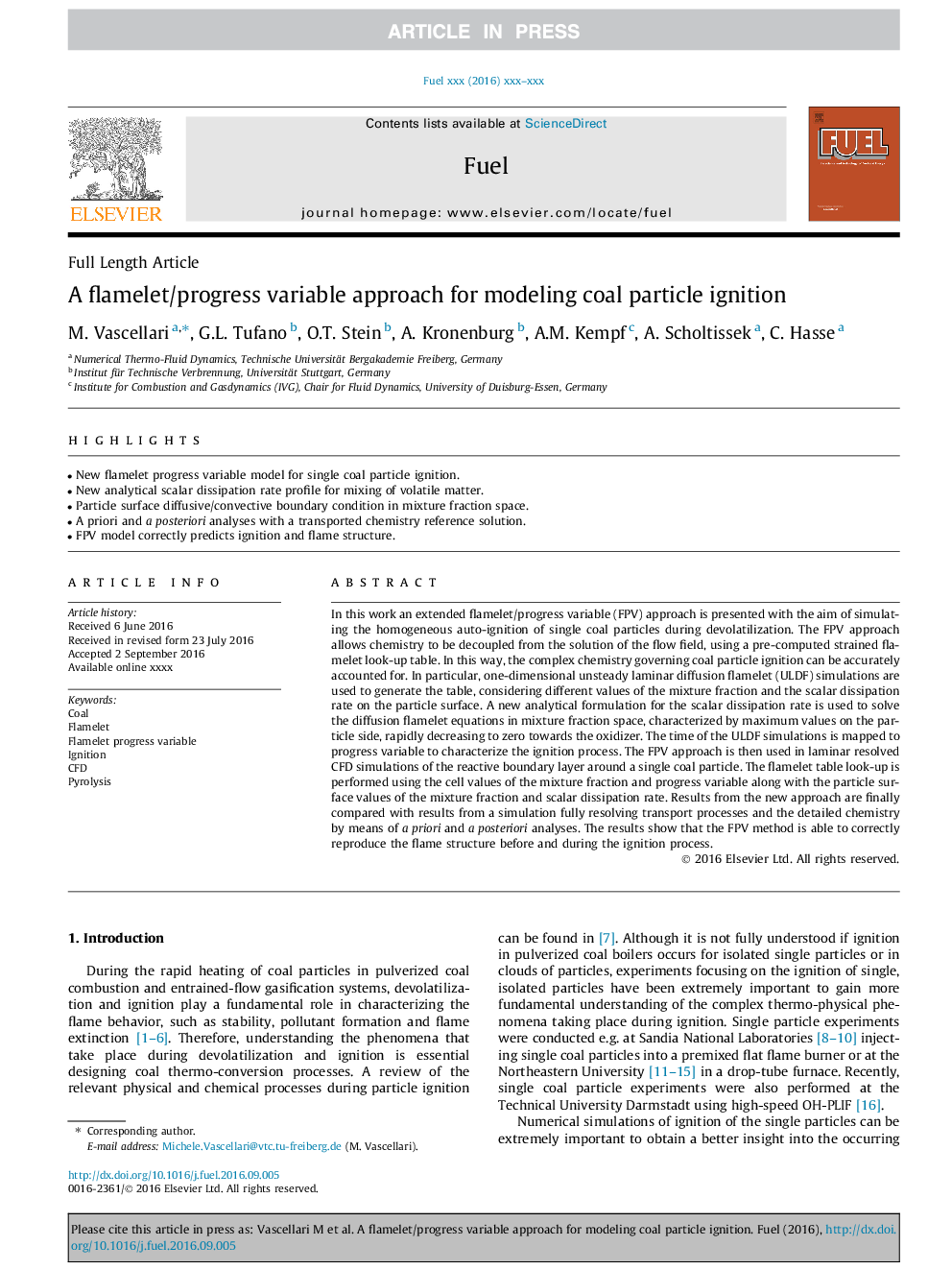| Article ID | Journal | Published Year | Pages | File Type |
|---|---|---|---|---|
| 6473648 | Fuel | 2017 | 10 Pages |
Abstract
In this work an extended flamelet/progress variable (FPV) approach is presented with the aim of simulating the homogeneous auto-ignition of single coal particles during devolatilization. The FPV approach allows chemistry to be decoupled from the solution of the flow field, using a pre-computed strained flamelet look-up table. In this way, the complex chemistry governing coal particle ignition can be accurately accounted for. In particular, one-dimensional unsteady laminar diffusion flamelet (ULDF) simulations are used to generate the table, considering different values of the mixture fraction and the scalar dissipation rate on the particle surface. A new analytical formulation for the scalar dissipation rate is used to solve the diffusion flamelet equations in mixture fraction space, characterized by maximum values on the particle side, rapidly decreasing to zero towards the oxidizer. The time of the ULDF simulations is mapped to progress variable to characterize the ignition process. The FPV approach is then used in laminar resolved CFD simulations of the reactive boundary layer around a single coal particle. The flamelet table look-up is performed using the cell values of the mixture fraction and progress variable along with the particle surface values of the mixture fraction and scalar dissipation rate. Results from the new approach are finally compared with results from a simulation fully resolving transport processes and the detailed chemistry by means of a priori and a posteriori analyses. The results show that the FPV method is able to correctly reproduce the flame structure before and during the ignition process.
Related Topics
Physical Sciences and Engineering
Chemical Engineering
Chemical Engineering (General)
Authors
M. Vascellari, G.L. Tufano, O.T. Stein, A. Kronenburg, A.M. Kempf, A. Scholtissek, C. Hasse,
